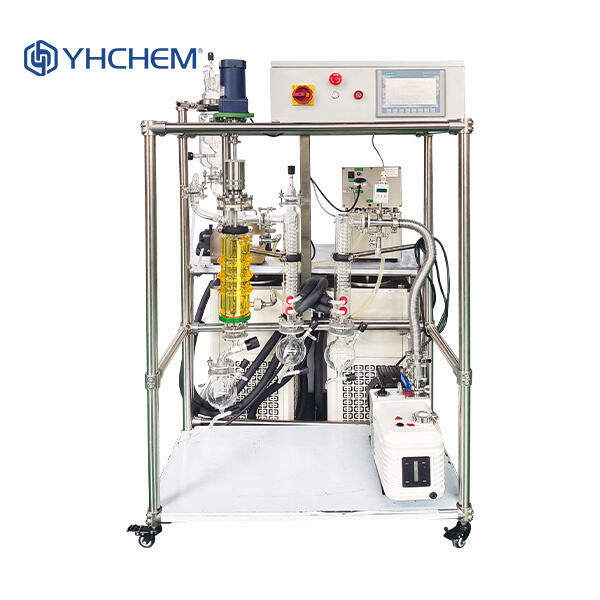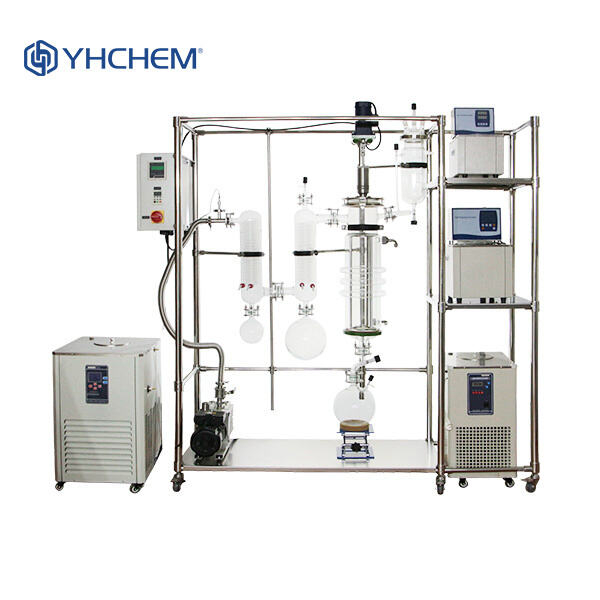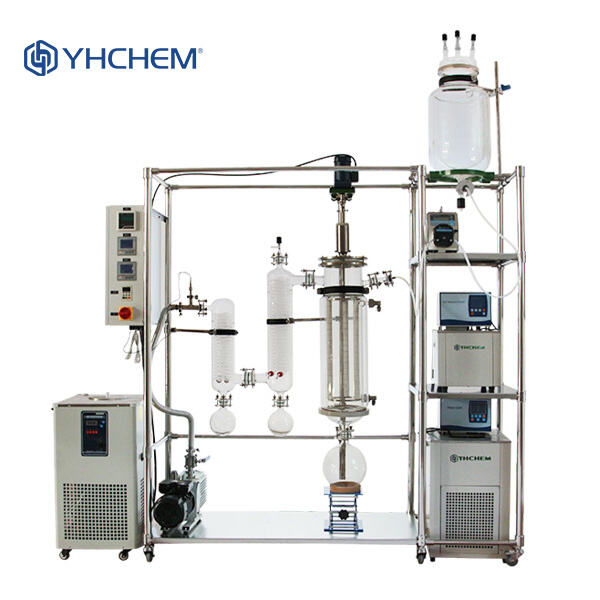Glass Wiped Film Evaporator is an extraordinary machinery used across various liquid items in order to isolate them separately. It is somewhat of a chemistry superhero, coming to the aid of scientists and engineers who want to work with such a substance. Continue reading to learn more about the Glass Wiped Film Evaporator and why it is critical to science!
The Glass Wiped Film Evaporator is a tool that resembles a long tube with a spinning blade in there. This blade splashes liquid on the walls of the tube forming a thin layer. As the liquid descends the tube, it begins to evaporate into gas. Then they collect the gas, which can have a wide array of uses.
The Glass Scale Wiped Film Evaporator Escalator CraftsmanshipMaterial: both the evaporator body and the internal condenser are made with high borosilicate 3.3 glass, which is good for heat and corrosion resistance. It’s clear, which means you can see through it and watch the liquid evaporate. This is key because scientists and engineers must be able to watch the process to ensure that all goes well.

The Glass Wiped Film Evaporator is used for a number of processes across a wide range of industries, particularly where concentrations of metals or other hazardous materials are involved. It is useful for isolating various components of a liquid mixture so scientists can study and use them. Scientists and engineers would have a much harder time without the Glass Wiped Film Evaporator.

About Us YHCHEM is a professional company specializing in the production of Glass Wiped Film Evaporatators. Their machines are well-designed, reliable devices that have become the go-to for scientists and engineers the world over. YHCHEM Glass Wiped Film Evaporators are simple to operate and maintain, while offering excellent performance for every experiment or application.

The evaporation action takes place when cleaned process fluid flows through and around the wiping blades as the wipe blades rotate inside the clyindrical glass evaporator walls to provide a thin film of process fluid in contact with the heat transfer surface. Spreading the liquid over a large area in a thin film means that more surface area is in contact with the hot gas and evaporation occurs more rapidly. This is significant in any area where time is relevant, such as medicine and food.